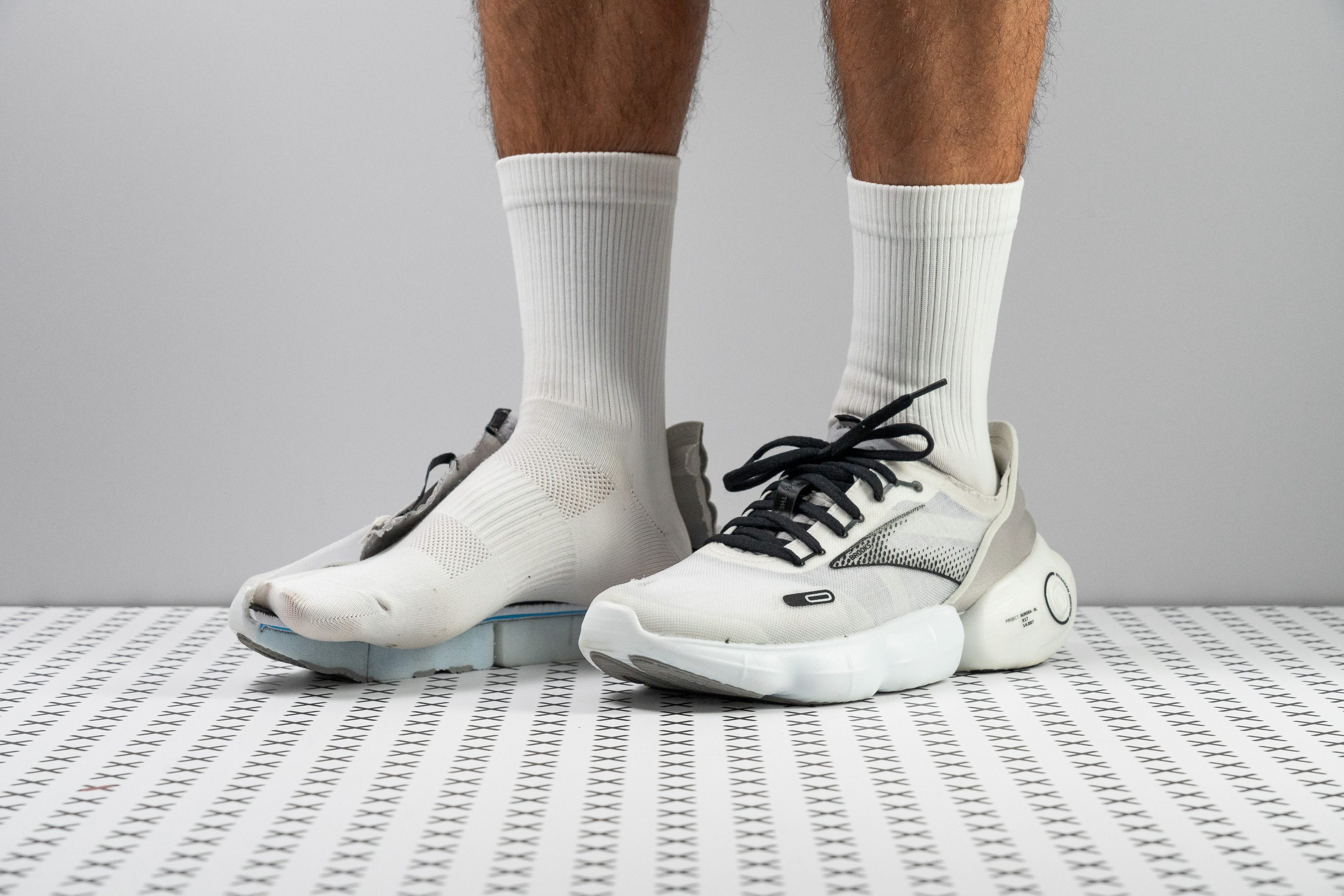Our verdict
Pros
- Exceptionally plush ride
- Highly flexible design
- Distinctive, eye-catching style
- Devours miles effortlessly
- Ideal for easy runs
- Fun ride
- Cutting-edge design
Cons
- Durability concerns
- Lacks tongue padding
- Premium price point
Audience verdict
- Top 15% in road running shoes
- Top 7% in Brooks running shoes
Comparison
The most similar running shoes compared
+ + Add a shoe | |||||
|---|---|---|---|---|---|
| Audience score | 90 Superb! | 84 Good! | 89 Great! | 84 Good! | |
| Price | £200 | £110 | £130 | £160 | |
| Pace | Daily running | Daily running | Daily running | Daily running | |
| Shock absorption | - | Moderate | Moderate | Moderate | |
| Energy return | - | Moderate | Moderate | Low | |
| Traction | - | High | Moderate | High | |
| Arch support | Neutral | Neutral | Neutral | Neutral | |
| Weight lab Weight brand | 8.7 oz / 247g 8.5 oz / 240g | 9.2 oz / 261g 9.5 oz / 268g | 10.1 oz / 285g 9.8 oz / 277g | 9.1 oz / 257g 10 oz / 283g | |
| Lightweight | ✓ | ✗ | ✗ | ✗ | |
| Drop lab Drop brand | 8.7 mm 6.0 mm | 7.8 mm | 7.0 mm 6.0 mm | 10.5 mm 10.0 mm | |
| Strike pattern | HeelMid/forefoot | Mid/forefoot | HeelMid/forefoot | Heel | |
| Size | Slightly large | Slightly small | True to size | True to size | |
| Midsole softness | Soft | Soft | Balanced | Balanced | |
| Difference in midsole softness in cold | Small | Normal | Normal | Normal | |
| Toebox durability | Bad | Good | Decent | Decent | |
| Heel padding durability | Bad | Good | Decent | Decent | |
| Outsole durability | Good | Good | Bad | Good | |
| Breathability | Moderate | Breathable | Moderate | Warm | |
| Width / fit | Narrow | Medium | Medium | Medium | |
| Toebox width | Medium | Medium | Medium | Medium | |
| Stiffness | Stiff | Flexible | Moderate | Moderate | |
| Torsional rigidity | Flexible | Flexible | Moderate | Moderate | |
| Heel counter stiffness | Moderate | Moderate | Moderate | Moderate | |
| Rocker | ✓ | ✗ | ✓ | ✗ | |
| Heel lab Heel brand | 37.0 mm 37.0 mm | 35.4 mm | 36.8 mm 31.0 mm | 36.9 mm 38.0 mm | |
| Forefoot lab Forefoot brand | 28.3 mm 31.0 mm | 27.6 mm | 29.8 mm 25.0 mm | 26.4 mm 28.0 mm | |
| Widths available | Normal | NormalWideX-Wide | Normal | Normal | |
| Orthotic friendly | ✓ | ✓ | ✓ | ✓ | |
| Season | All seasons | SummerAll seasons | All seasons | All seasons | |
| Removable insole | ✓ | ✓ | ✓ | ✓ | |
| Ranking | #44 Top 12% | #237 Bottom 36% | #86 Top 24% | #233 Bottom 37% | |
| Popularity | #234 Bottom 36% | #29 Top 8% | #255 Bottom 31% | #151 Top 41% |
Who should buy
We've thoroughly tested the Brooks Aurora-BL and confidently recommend it for those who:
- Seek a daily trainer that not only stands out visually but also offers an incredibly fun and unique ride.
- Prefer plush running shoes but require a model with decent stability, thanks to its wide midsole.
- Are fans of Brooks looking to experience the cutting-edge innovation from its BlueLine lab.
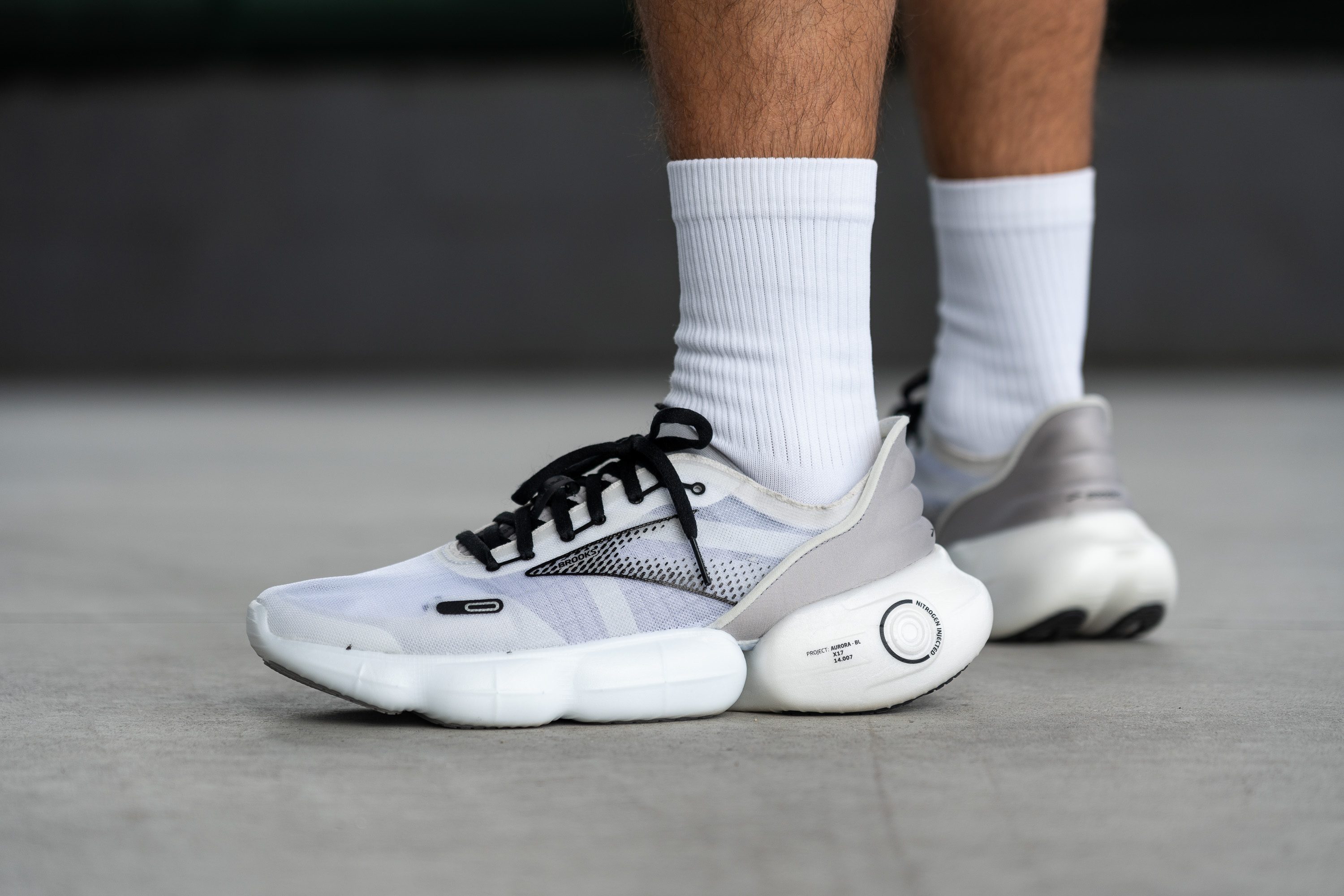
Who should NOT buy
While the Aurora-BL might resemble something from a Mars mission with its standout design, we believe its high price tag of £200 might deter many potential buyers, especially since more affordable options like the ASICS Novablast 4 or the Hoka Clifton 9 offer similar cushioning at a lower cost.
We also have serious concerns about its durability. Our lab tests showed that this Brooks has a lot of exposed foam and an upper that isn't built to last. Comparatively, the Nike Invincible 3 offers better plush foam and full-length rubber coverage, and the On Cloudmonster 2 delivers outstanding durability with premium features and a neck-turning design.
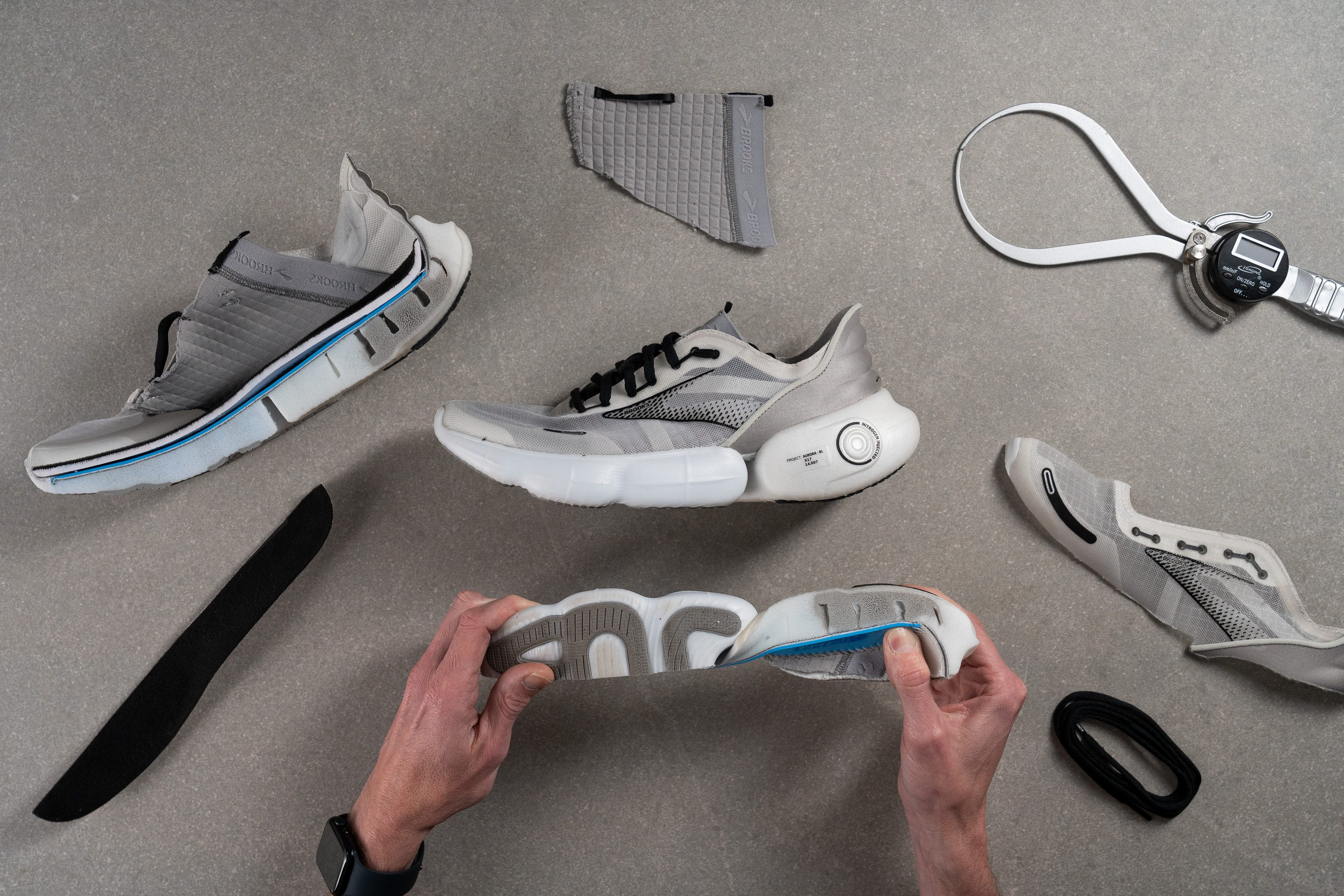
Cushioning
Heel stack
The Aurora-BL sports a maximalist design, and indeed it delivers. We measured a substantial 37.0 mm of cushioning in the heel, providing ample height to comfortably support even the heaviest heel strikers.
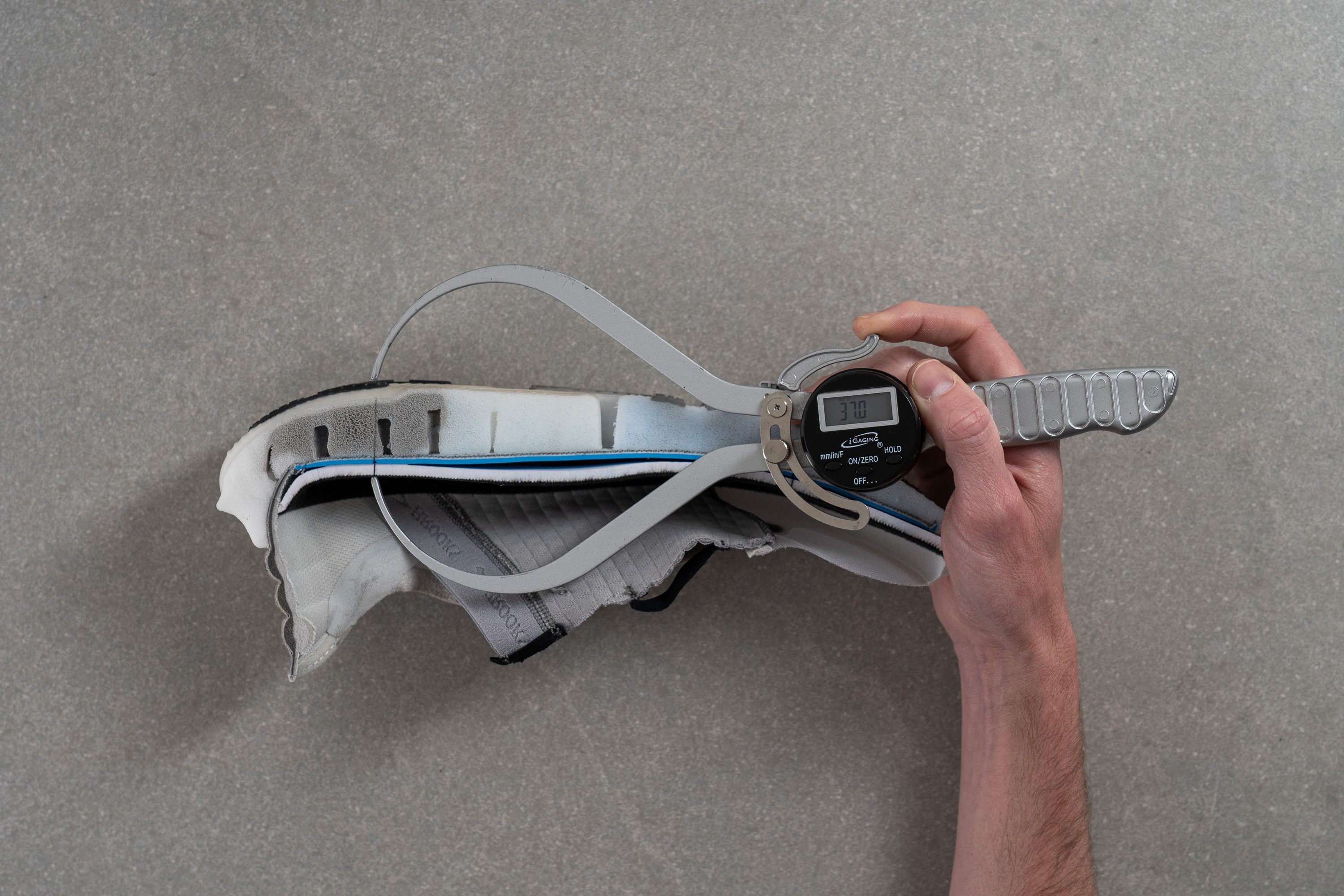
| Aurora-BL | 37.0 mm |
| Average | 34.8 mm |
Forefoot stack
Throughout our test runs, we consistently noticed a total lack of ground feel even when landing with our forefoot, and an impressive level of padding beneath the ball of our feet.
This was hardly a shock for us, given that our measurement in this region showed a generous 28.3 mm of cushioning.
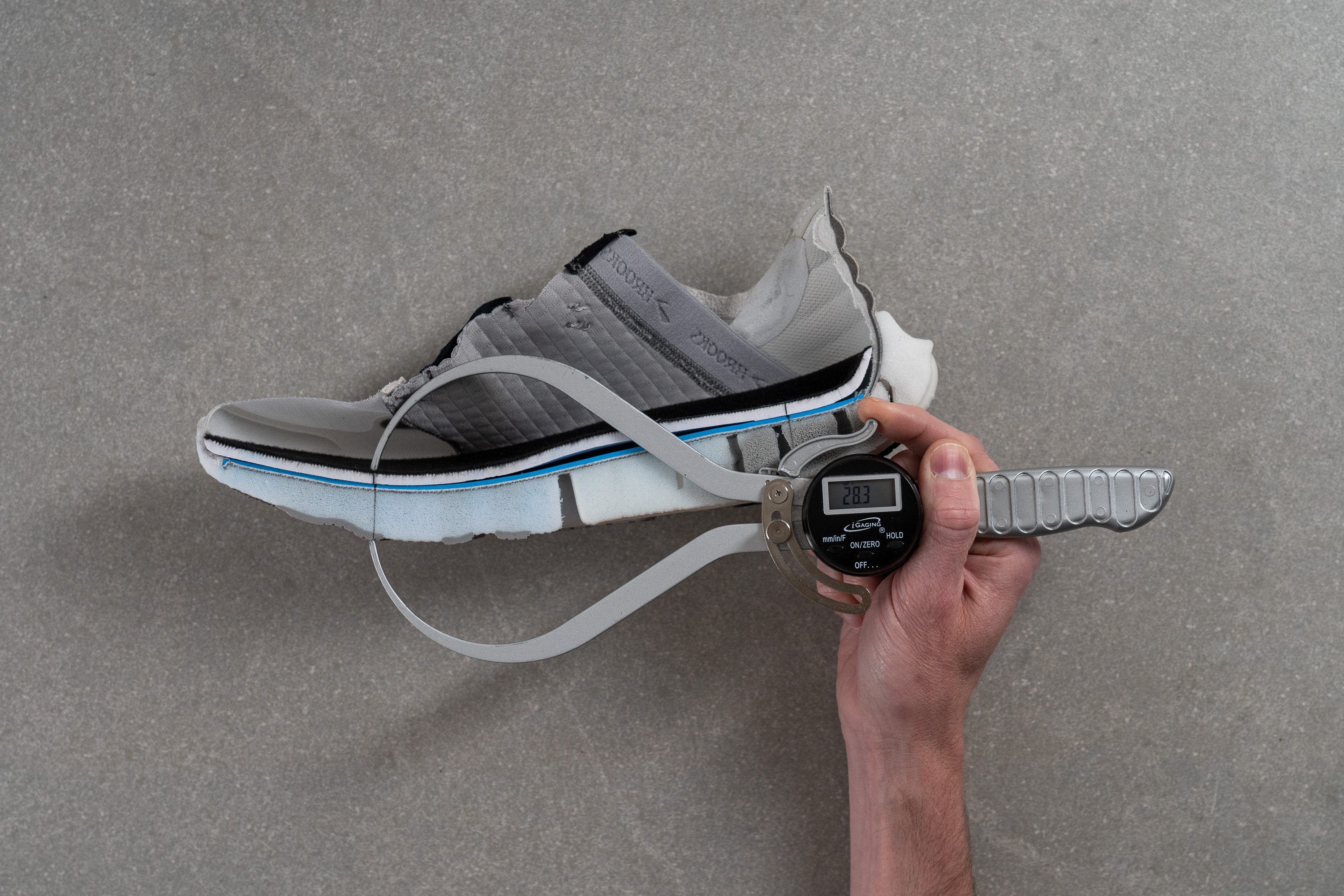
| Aurora-BL | 28.3 mm |
| Average | 26.2 mm |
Drop
The difference between our measurements indicates a real 8.7 mm drop. This moderate approach suits all types of footstrikes well.
However, it was somewhat surprising to us here in the lab, as Brooks officially lists the drop at 6 mm. This discrepancy is notable, but it's crucial to mention that our measurements adhere strictly to World Athletics guidelines.
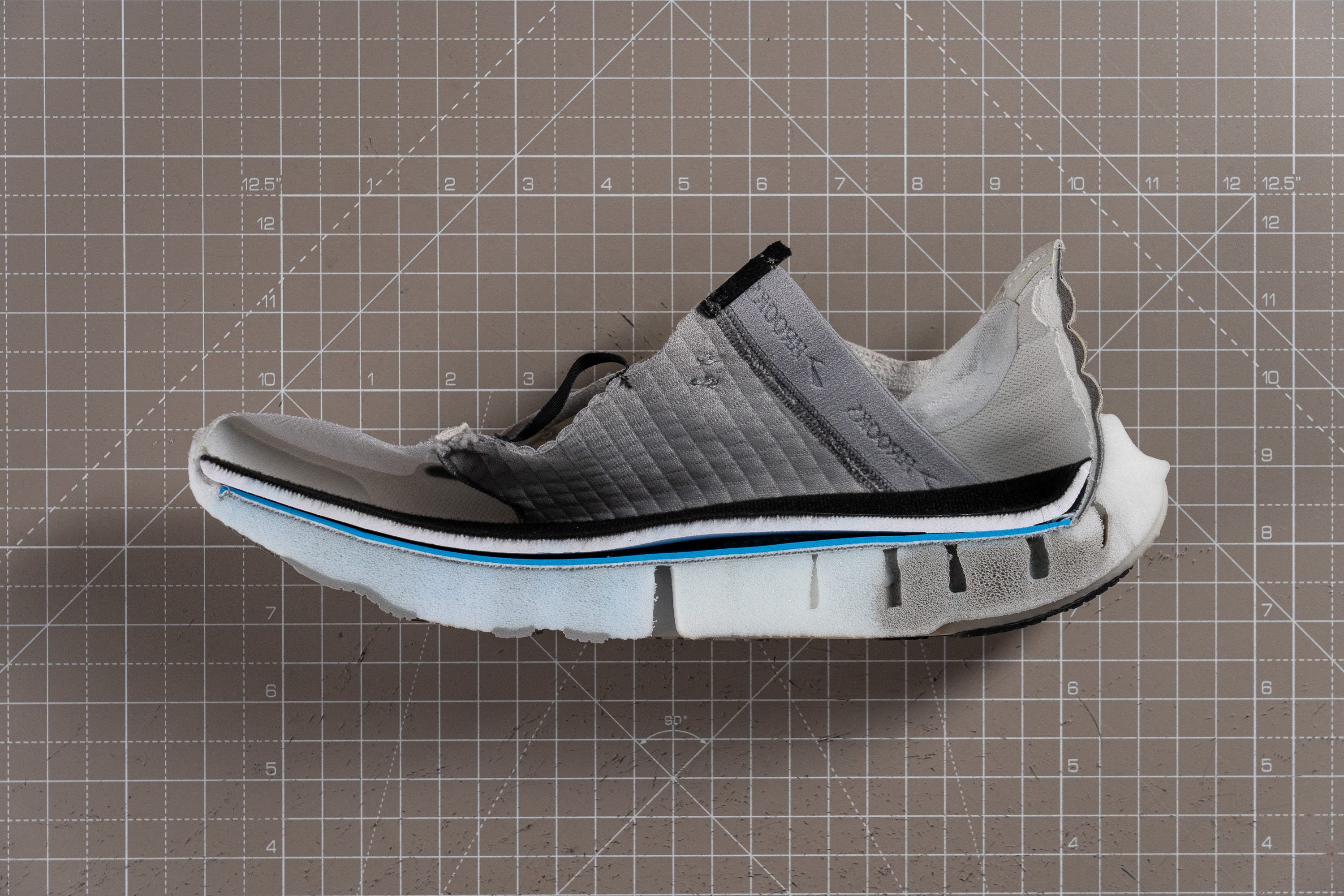
| Aurora-BL | 8.7 mm |
| Average | 8.6 mm |
Midsole softness
The midsole is another standout feature of the Aurora-BL, offering a plush and bouncy feel, thanks to its full-length DNA Loft v3 nitrogen-infused, supercritical foam.
During our testing with a Shore A durometer, the Aurora-BL performed as anticipated—delivering a low score of 15.3 HA. This measurement underscores the cloud-like comfort we experienced during our runs.
Given these results, we do not recommend the Aurora-BL for those who prefer a firmer, responsive ride. For a more balanced experience in a premium package, consider the ASICS Superblast instead.
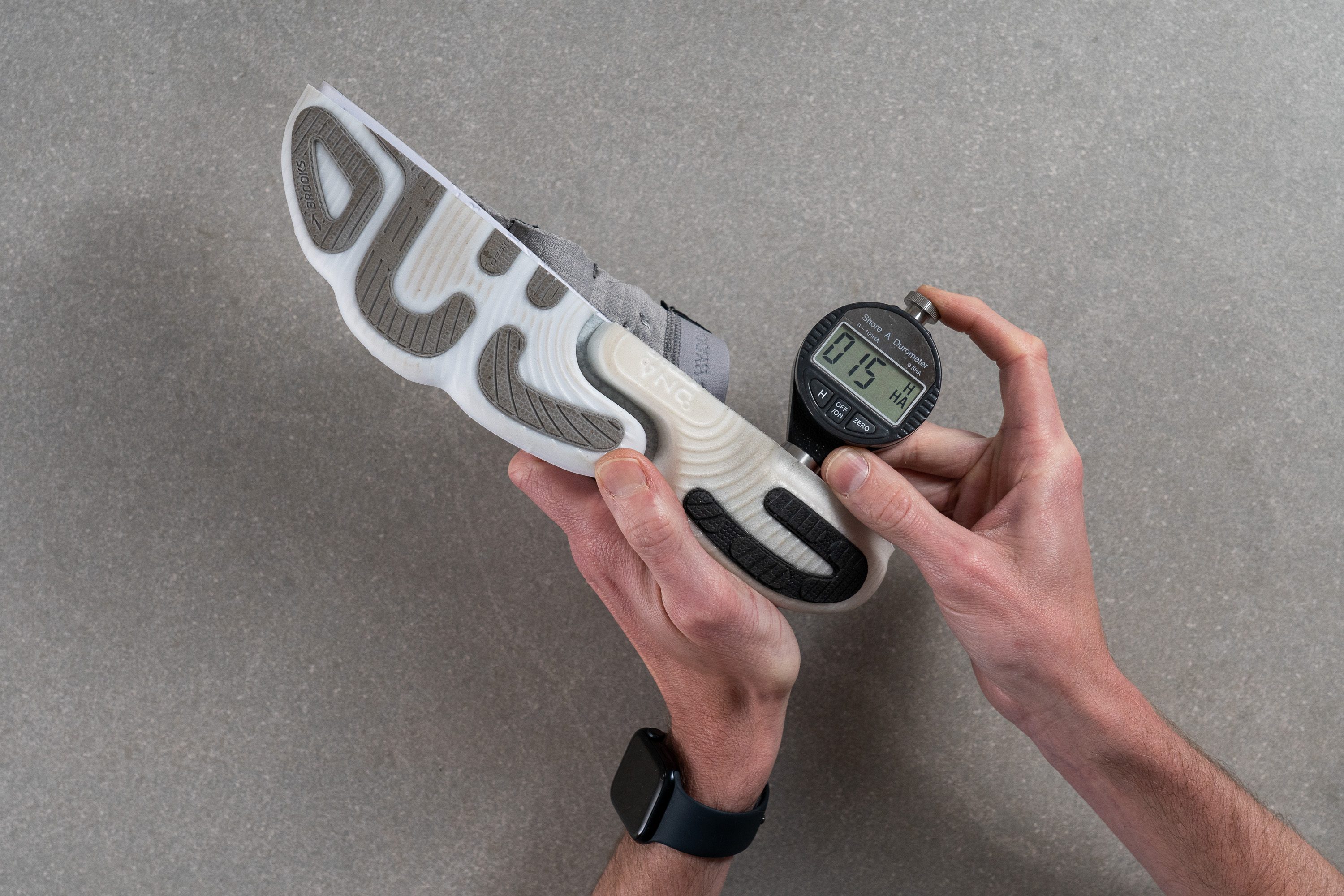
| Aurora-BL | 15.3 HA |
| Average | 20.4 HA |
Rocker
Brooks typically offers a more traditional ride in their trainers, often steering clear of heavily rockered designs. However, the Aurora-BL stands out as an exception.
Dubbed the Glide Roll, this design features noticeable forefoot and heel rockers that significantly enhance the running experience, particularly for those who use a heel striking technique.

Size and fit
Size
Brooks Aurora-BL fits slightly large (17 votes).
Width / Fit
One of our initial concerns was that this shoe might have a narrow upper, as it appeared so upon unboxing. However, after testing it on our feet and taking precise measurements with our callipers, we found the fit to be quite standard at 97.3 mm, though it leans slightly towards the narrower side.
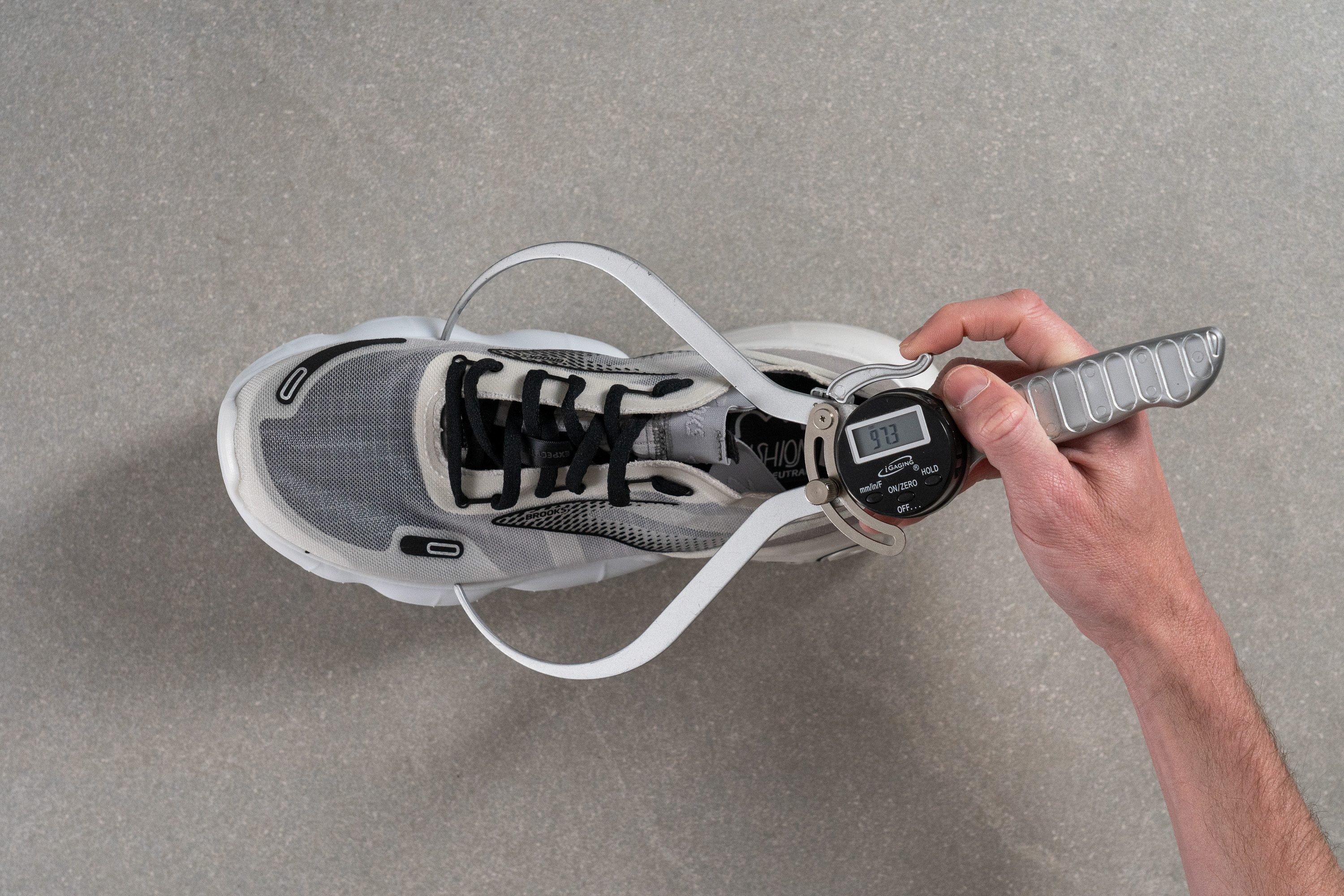
This test follows an older methodology, which is why you don't see recently tested shoes in the chart. Results from different methodologies can not be compared.
| Aurora-BL | 97.3 mm |
| Average | 98.5 mm |
Toebox width
Our second measurement, focused on the big toe area, is crucial for truly understanding the shoe's fit.
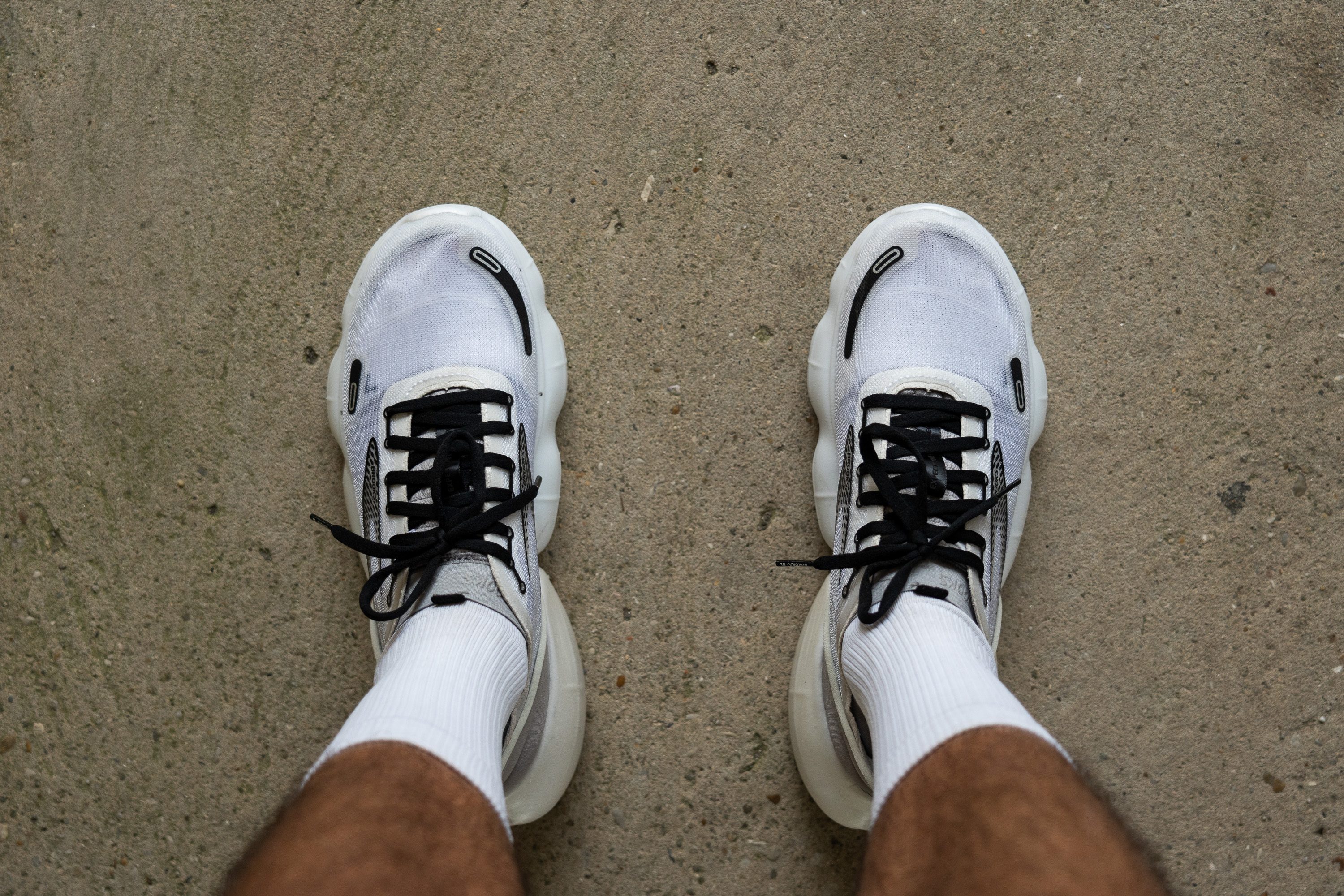
We were pleased to find that it doesn’t taper much at 78.3 mm. Overall, we can confirm—based on our tests—that this shoe fits similarly to most average daily trainers.

This test follows an older methodology, which is why you don't see recently tested shoes in the chart. Results from different methodologies can not be compared.
| Aurora-BL | 78.3 mm |
| Average | 78.4 mm |
Flexibility / Stiffness
With the market increasingly dominated by stiff and maximalist shoes, we're thrilled to report that Brooks has made the Aurora-BL exceptionally flexible by integrating a decoupled heel into its design—making it an excellent choice for easy paces.
In our 90-degree bend test, we only needed to apply 20.2N of force to flex the shoe to 90 degrees. Truly remarkable!
This test follows an older methodology, which is why you don't see recently tested shoes in the chart. Results from different methodologies can not be compared.
| Aurora-BL | 20.2N |
| Average | 28.1N |
Stiffness in cold (%)
After placing the BL in the freezer for a second time, we conducted another bend test. This time, we had to exert 36.3% more force, a result that feels disappointing for a shoe priced at £200.
| Aurora-BL | 36% |
| Average | 33% |
Weight
After placing the BL in the freezer for a second time, we conducted another bend test. This time, we had to exert 36.3% more force, a result that feels disappointing for a shoe priced at £200.
Weight
At just 8.7 oz (247g), the Aurora-BL felt exceptionally light during runs and tips the scales below most shoes offering similar cushioning—a surprising feat given its deceptively sturdy appearance.
How did Brooks achieve this? It boils down to three key elements: a razor-thin upper, a supercritical midsole, and a minimal rubber coverage as we proved before. While this design leads to some durability concerns, the impressive lightness of the shoe stands out.
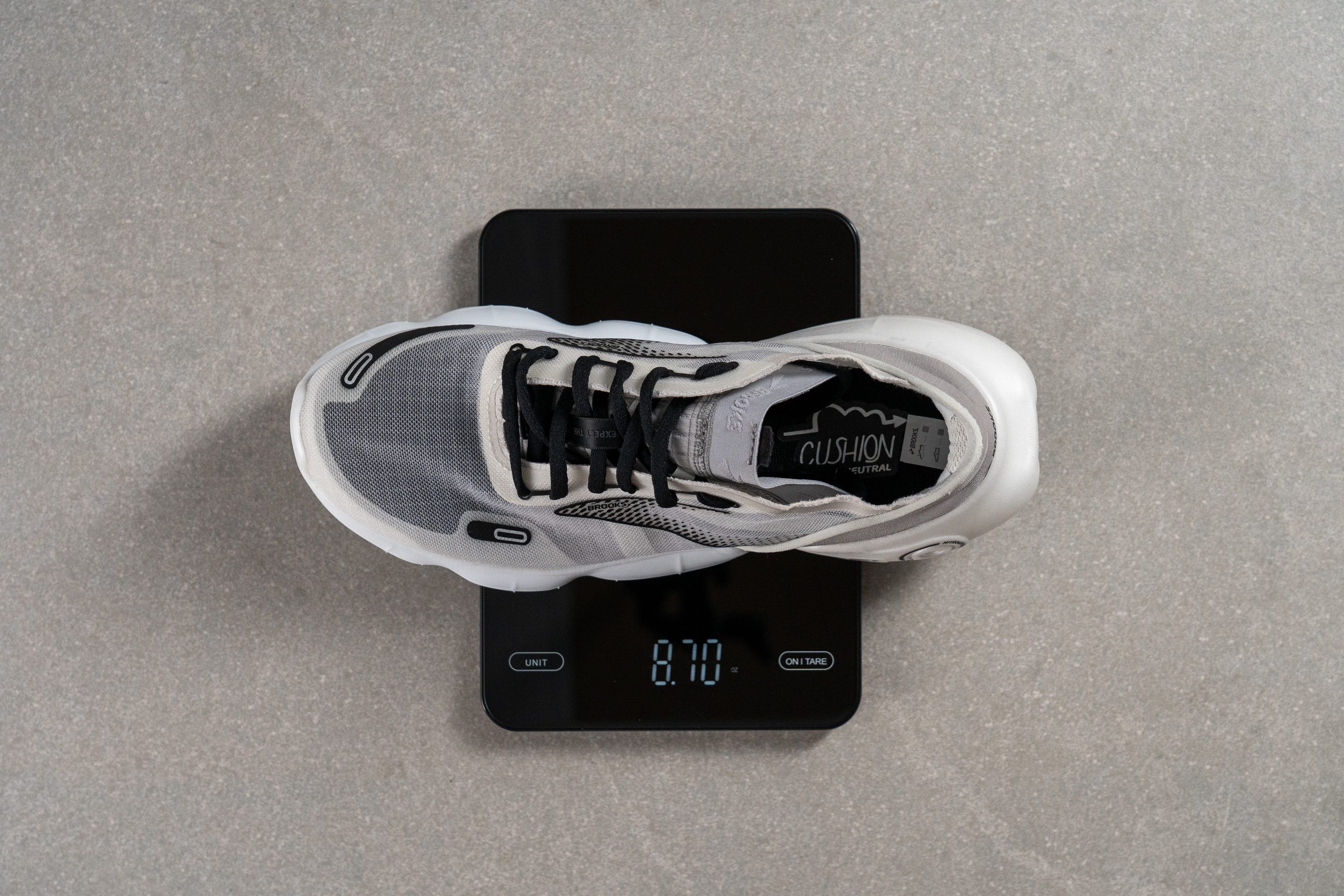
| Aurora-BL | 8.7 oz (247g) |
| Average | 9.3 oz (264g) |
Breathability
In our initial test with the futuristic Aurora-BL, we filled the upper with smoke to gauge its ventilation capabilities.
We observed a below-average performance in smoke evacuation, which we rated 3/5. While not detrimental—for instance, an ultra-ventilated upper isn't ideal for cold winter runs—it's worth noting the potential for insufficient airflow on hotter days.
Using a light, we discovered that the Aurora-BL features a paper-thin toebox. However, Brooks has significantly increased the thickness throughout the rest of the shoe to enhance stability and comfort.
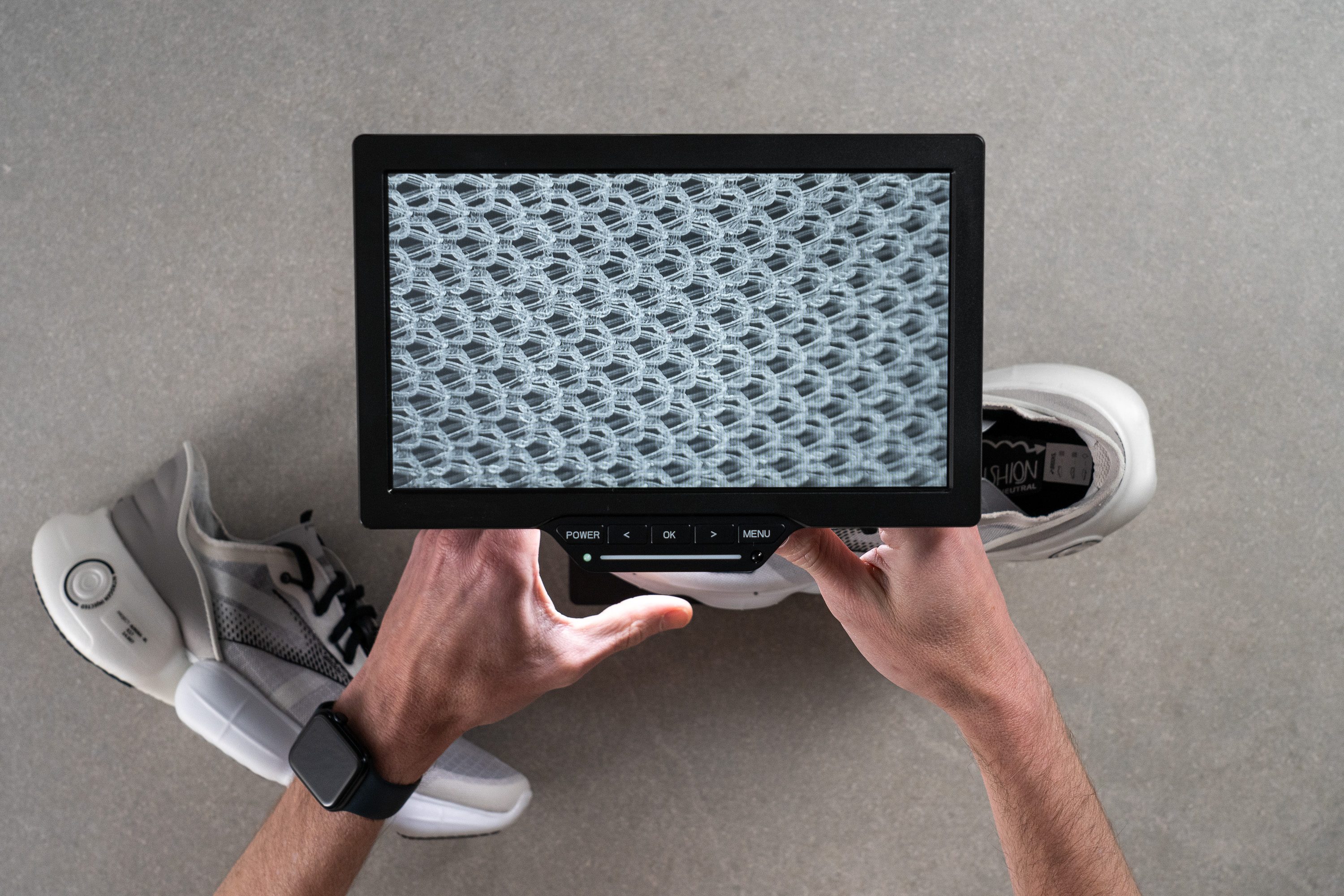
We then examined the engineered mesh of the toebox under a microscope and found it to be incredibly thin—truly one of the most remarkable layers of mesh that we've encountered in the lab.
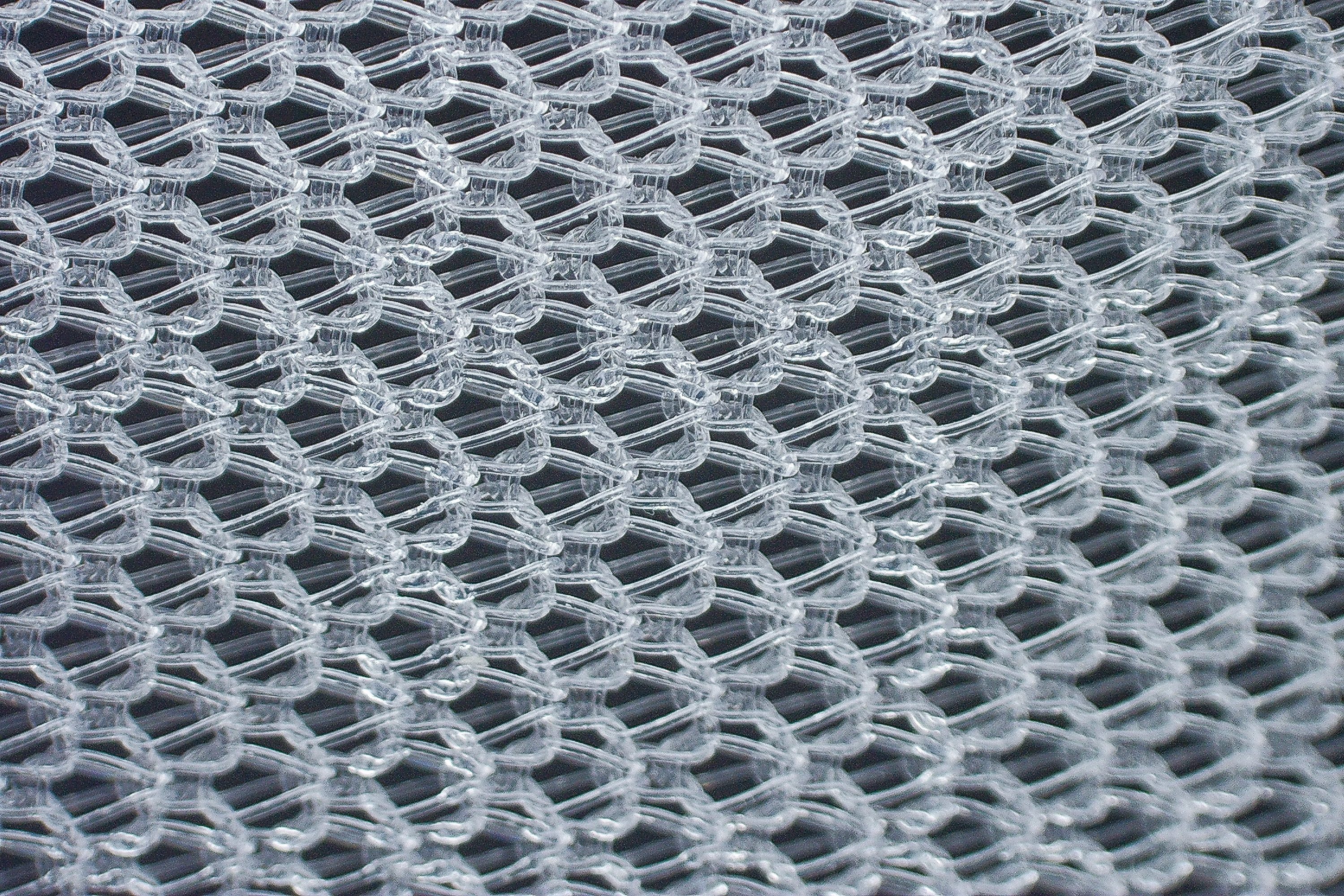
Driven to fully understand the upper, we analysed a cross-section and found that the tongue system extends to the midfoot.
This design increases thickness and provides substantial comfort in that region, albeit at the expense of full-length airflow.
| Aurora-BL | 3 |
| Average | 3.7 |
Stability
Lateral stability test
At first glance, the Aurora-BL might not seem stable due to its substantial, pillow-like foam, which could suggest a wobbly ride.
However, that's not the case. The shoe's ultra-wide platform and significant midsole sidewalls in the heel area provide decent support, particularly for heel strikers. While it won't perform exactly like a Kayano 30, we found it offers more support than one might expect.
Torsional rigidity
This is one of the few shoes on the market featuring a decoupled heel—a design element we'd love to see more often in daily trainers due to its significant boost in comfort. On the other hand, such designs are more costly and complex to manufacture, which explains their rarity.
As demonstrated in our video, the BL bends like a yoga master. This flexibility led us to rate it a 1/5 for torsional rigidity.
| Aurora-BL | 1 |
| Average | 3.5 |
Heel counter stiffness
We discovered that the heel counter performs adequately, earning a 3/5, comparable to a typical running shoe. It offers sufficient rigidity to maintain structure and prevent lateral heel collapse, yet it remains non-intrusive.
| Aurora-BL | 3 |
| Average | 2.9 |
Midsole width - forefoot
We recently highlighted the substantial size of the Aurora-BL, which significantly contributes to its stability.
It combines a standard fit with a broad base, offering a secure feel upon landing. In the forefoot area, we measured 119.4 mm, comparable to many stability shoes, enhancing its secure footing.
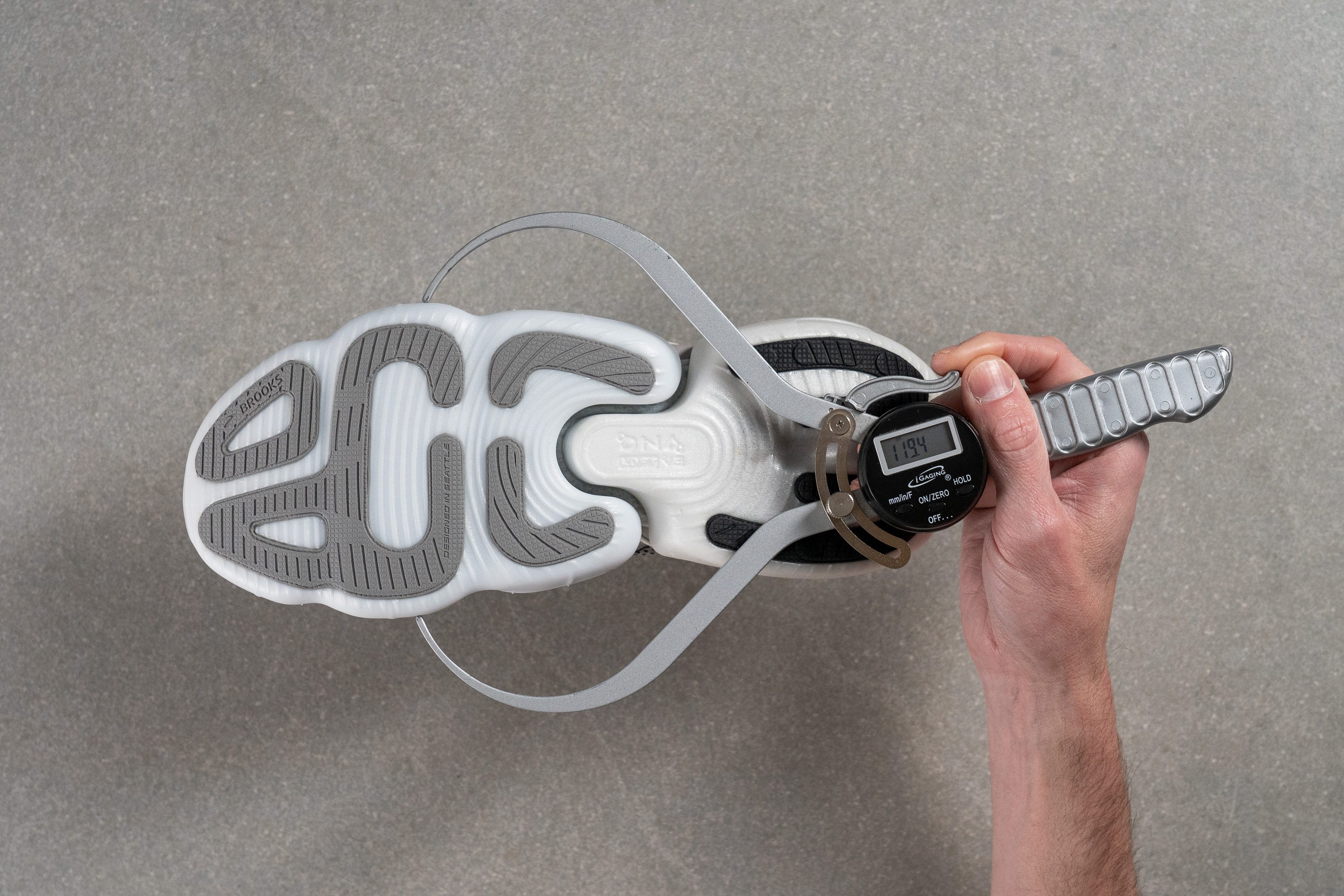
| Aurora-BL | 119.4 mm |
| Average | 114.4 mm |
Midsole width - heel
The heel tells a similar, yet more pronounced story than the forefoot, measuring a massive 102.1 mm.
This substantial size greatly benefits heel strikers, as the shoe also includes a well-designed heel bevel that smooths the transition to the decoupled forefoot, enhancing overall efficiency.
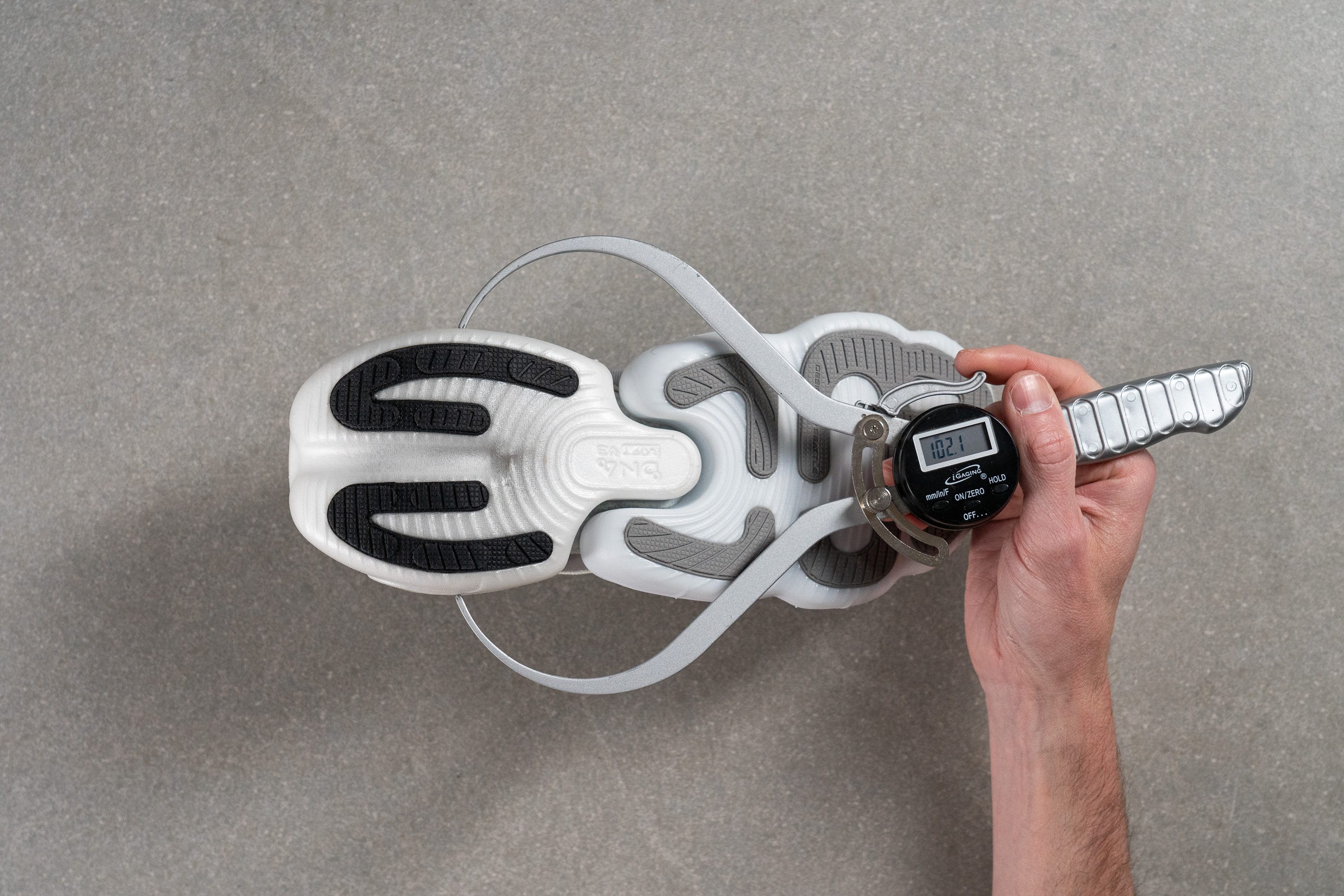
| Aurora-BL | 102.1 mm |
| Average | 90.7 mm |
Durability
Toebox durability
With its razor-thin, almost transparent toebox, we braced ourselves for a potential disaster during our first Dremel test.
Indeed, after completing the test, we had no choice but to give the Aurora-BL our lowest durability score—a dismal 1 out of 5. This result is a concerning start for durability assessments.
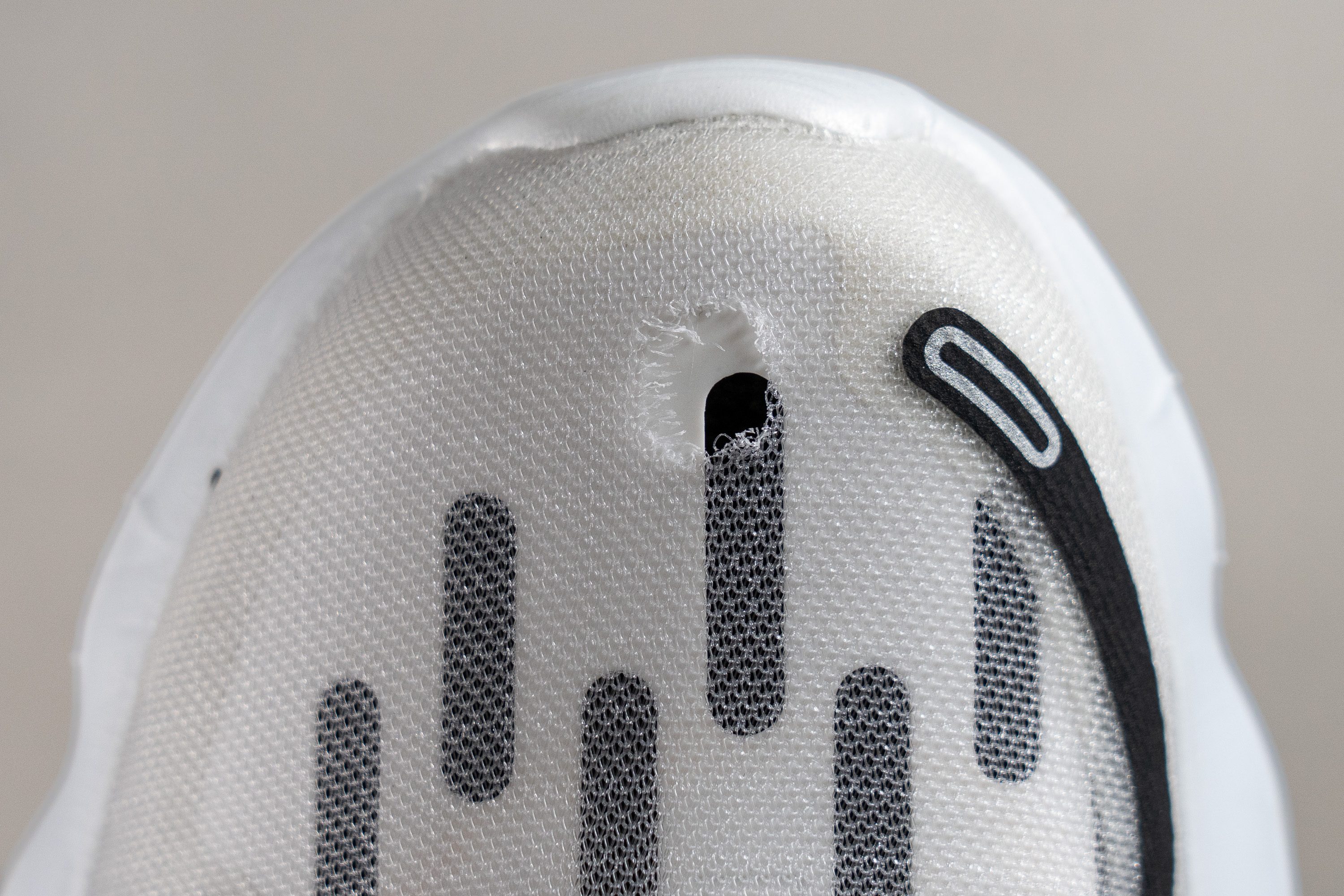
| Aurora-BL | 1 |
| Average | 2.6 |
Heel padding durability
The heel counter is exceptionally comfortable and feels genuinely premium, justifying its £200 price tag. But does it offer durability?
Regrettably, it does not (1/5). Those who experience wear in this area from their Achilles tendon should consider a more durable high-end trainer, such as the ASICS Nimbus 26.

| Aurora-BL | 1 |
| Average | 3.4 |
Outsole hardness
After two consecutive disappointing tests, we hoped for an improvement with the outsole. Our initial test involved measuring the hardness of the rubber, which registered at 81.0 HC—an average score that aims to balance durability and grip.
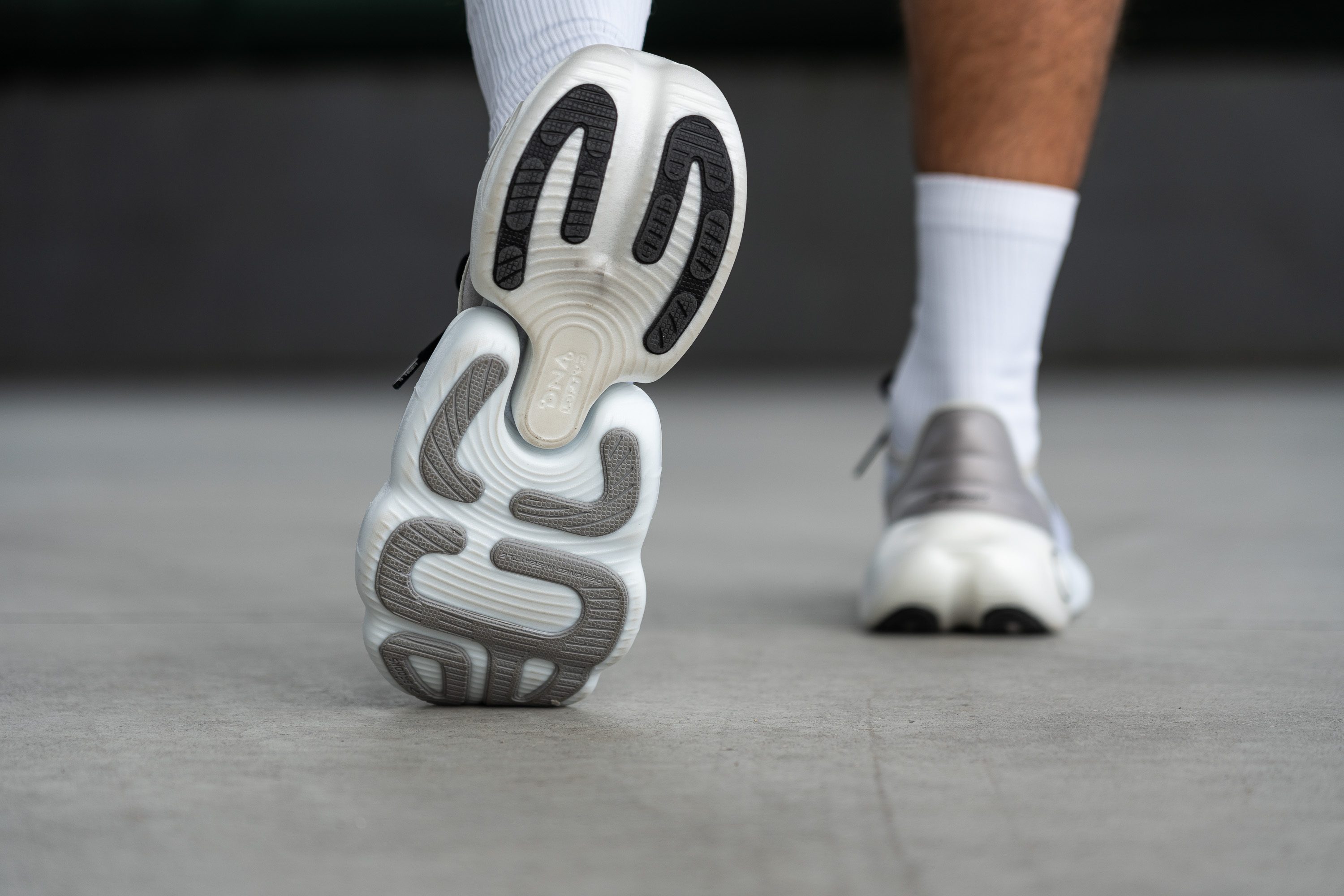
Yet, the Aurora-BL is not your average trainer. It features a significant amount of exposed foam with only four pieces of rubber strategically placed to protect the most wear-prone areas.
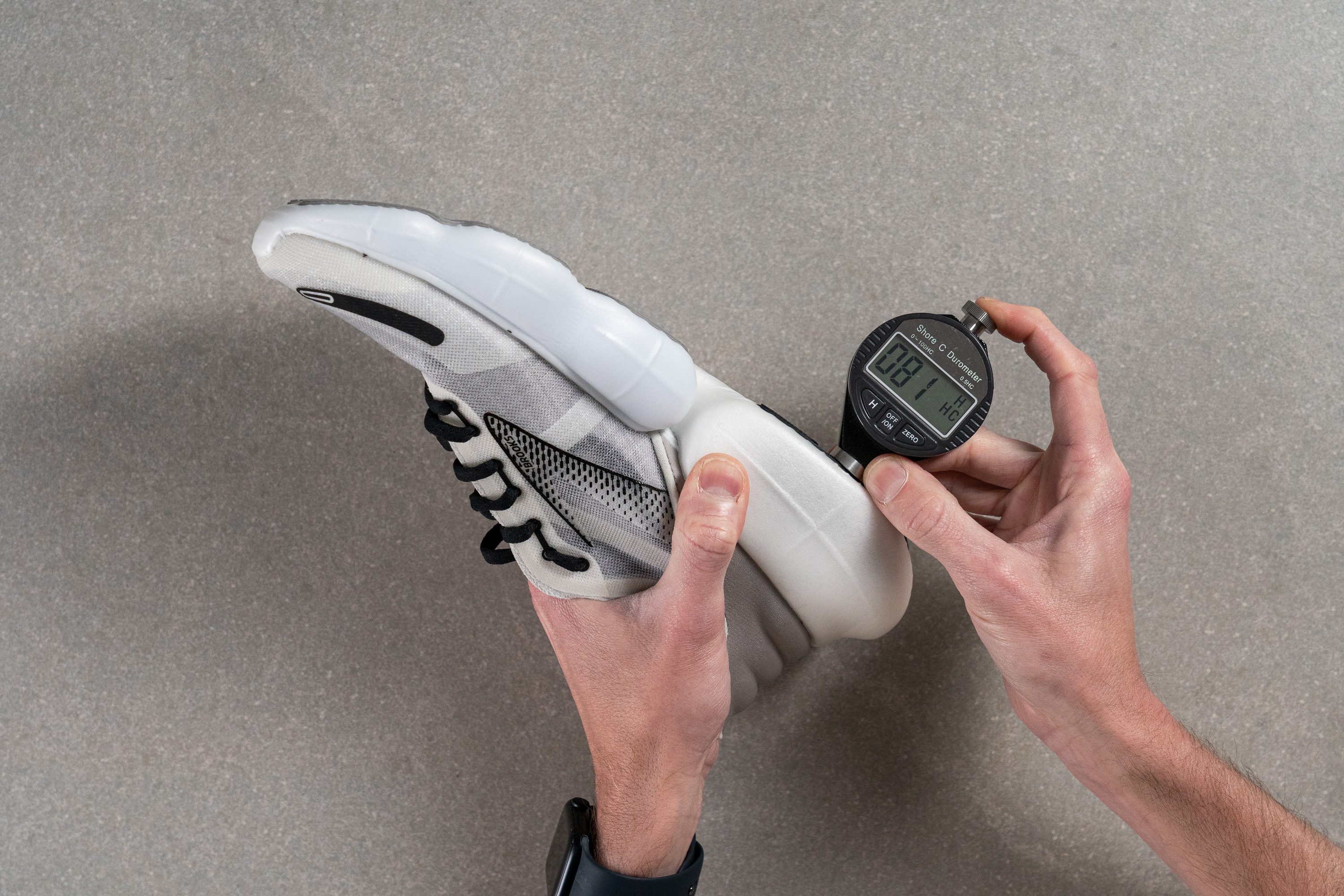
| Aurora-BL | 81.0 HC |
| Average | 79.2 HC |
Outsole durability
We were aware that the Aurora-BL couldn't afford another disappointing Dremel test, given the minimal coverage on its outsole.
Fortunately, this test yielded much better results, as we discovered only a 0.7 mm mark on the rubber. That's definitely a positive outcome!
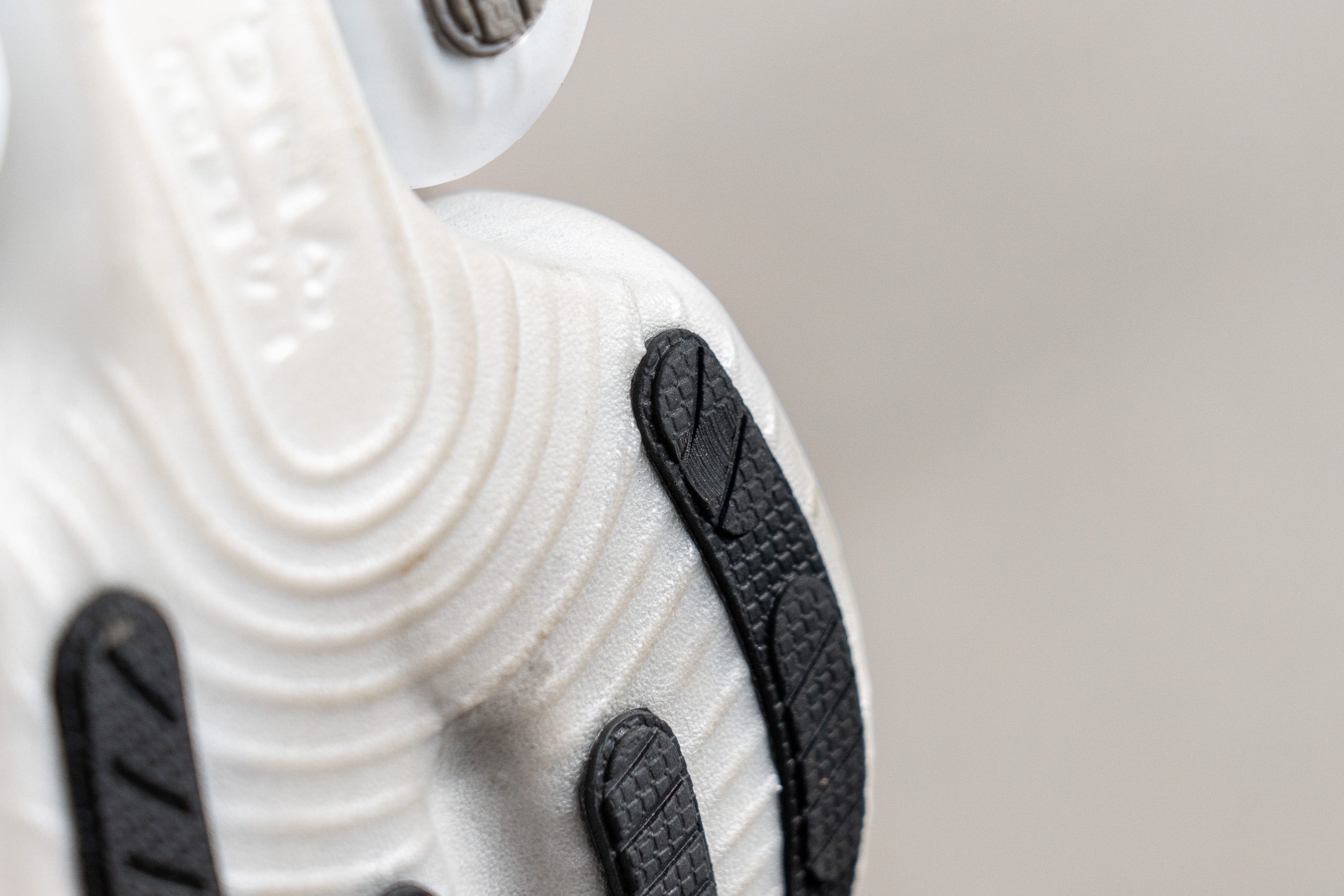
| Aurora-BL | 0.7 mm |
| Average | 1.1 mm |
Outsole thickness
This test also turned out positive, as we discovered enough rubber—at 3.1 mm—to sustain decent mileage.
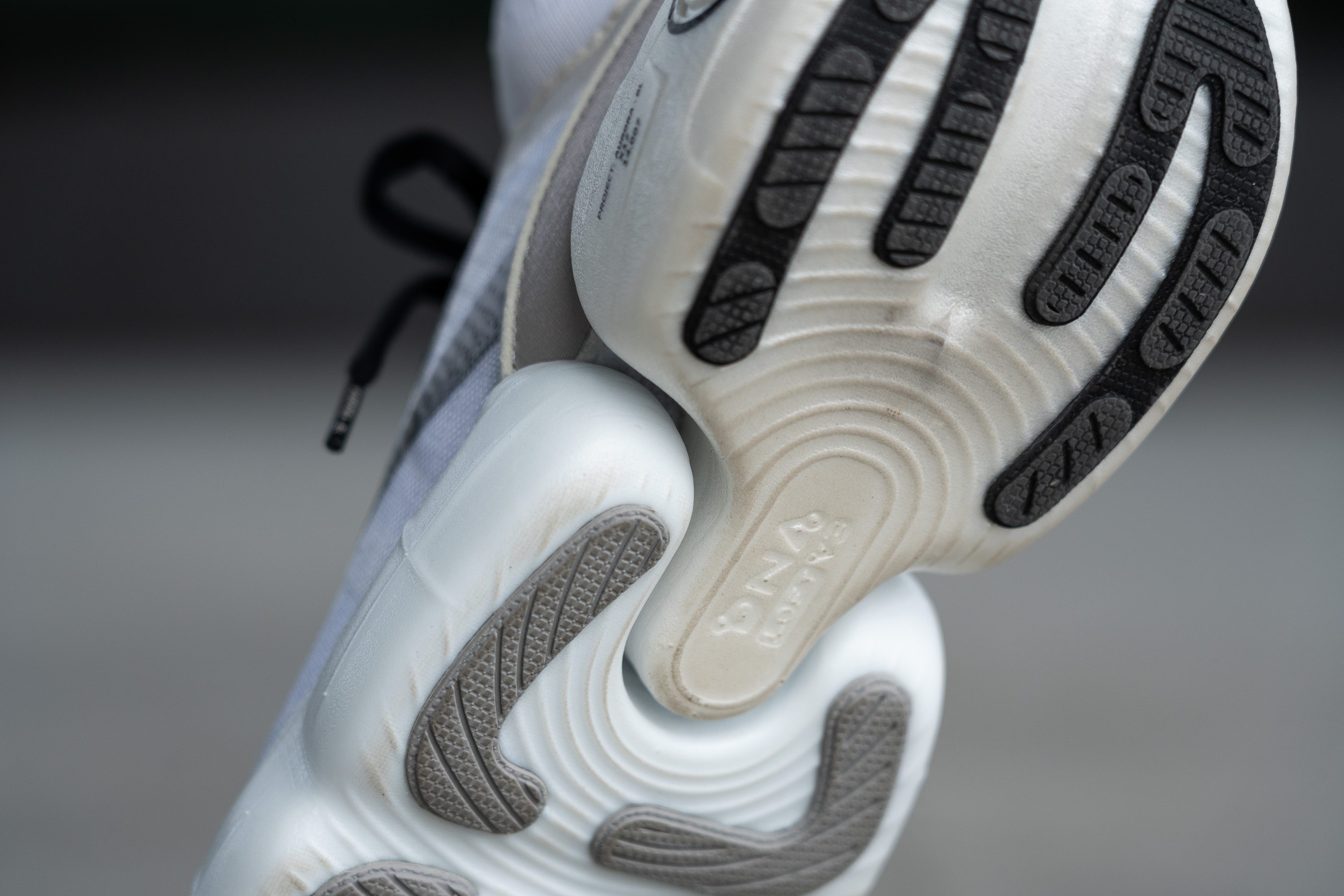
Had Brooks used less rubber, it would have been too risky, considering the minimal contact area with the ground, which naturally accelerates outsole wear on this shoe.
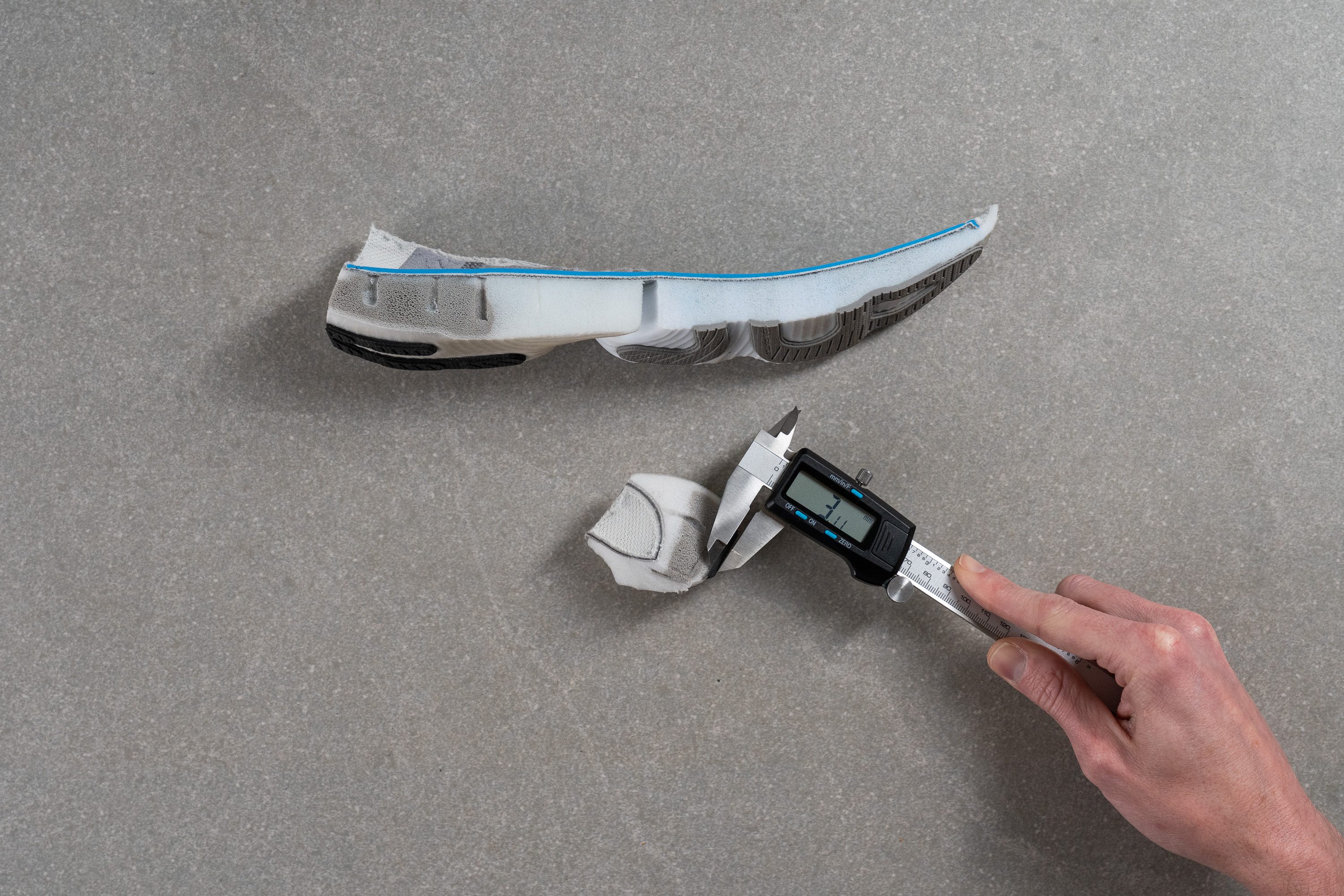
| Aurora-BL | 3.1 mm |
| Average | 3.2 mm |
Misc
Insole thickness
We discovered that the Aurora-BL uses a standard 5.0-mm insole, and it feels like at £200, we might have expected an insole made from the same advanced foam as the midsole, right?
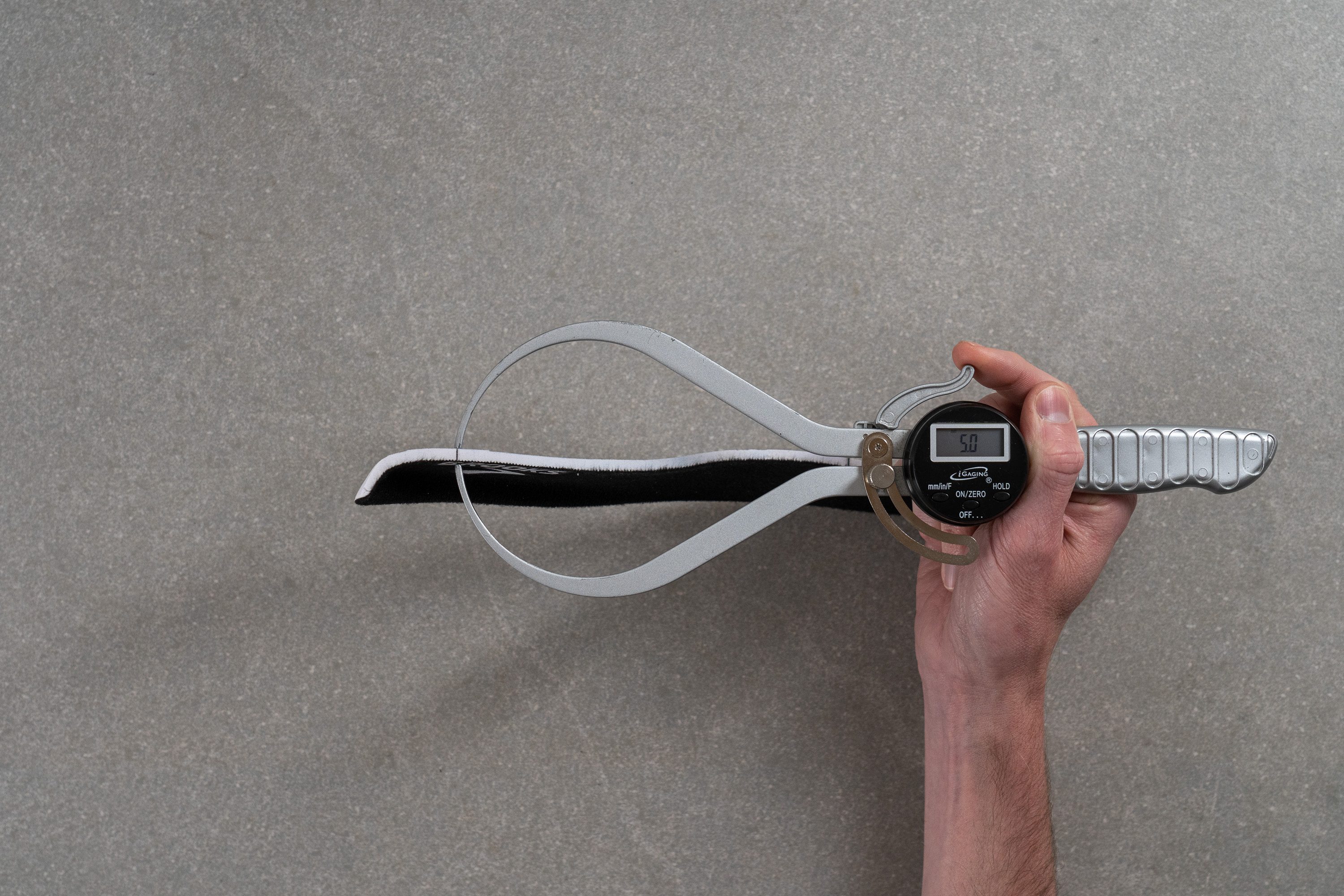
| Aurora-BL | 5.0 mm |
| Average | 4.5 mm |
Removable insole
Despite the shoe's unique design, the insole remains quite average and can be easily removed.
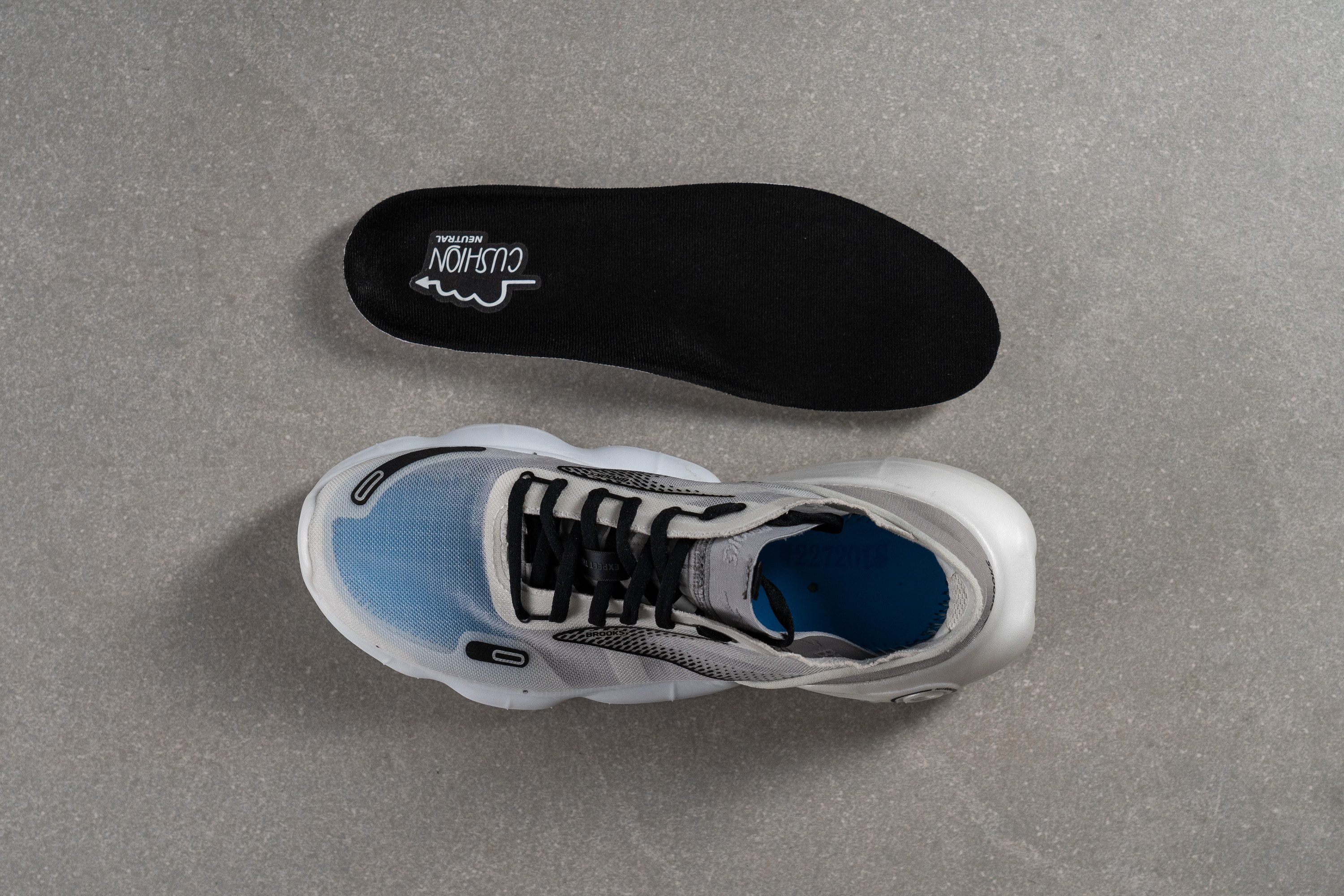
| Aurora-BL | Yes |
Midsole softness in cold (%)
How does the DNA Loft v3 foam perform in cold temperatures? Quite well, actually.
After placing it in our freezer for 20 minutes, we observed a 22.2% change in performance, which is impressive for an EVA-based foam. It’s clear to us that the addition of nitrogen to the formula really enhances its cold-weather performance!

| Aurora-BL | 22% |
| Average | 24% |
Reflective elements
At £200, we expected Brooks to include reflective elements to enhance our safety during night runs. It seems to us that the absence of such features is a significant oversight, particularly given the shoe's futuristic design—a real missed opportunity to integrate something both functional and cool!

| Aurora-BL | No |
Tongue padding
For a shoe intended for daily miles, we found it surprising that the tongue lacks sufficient padding at just 1.0 mm.
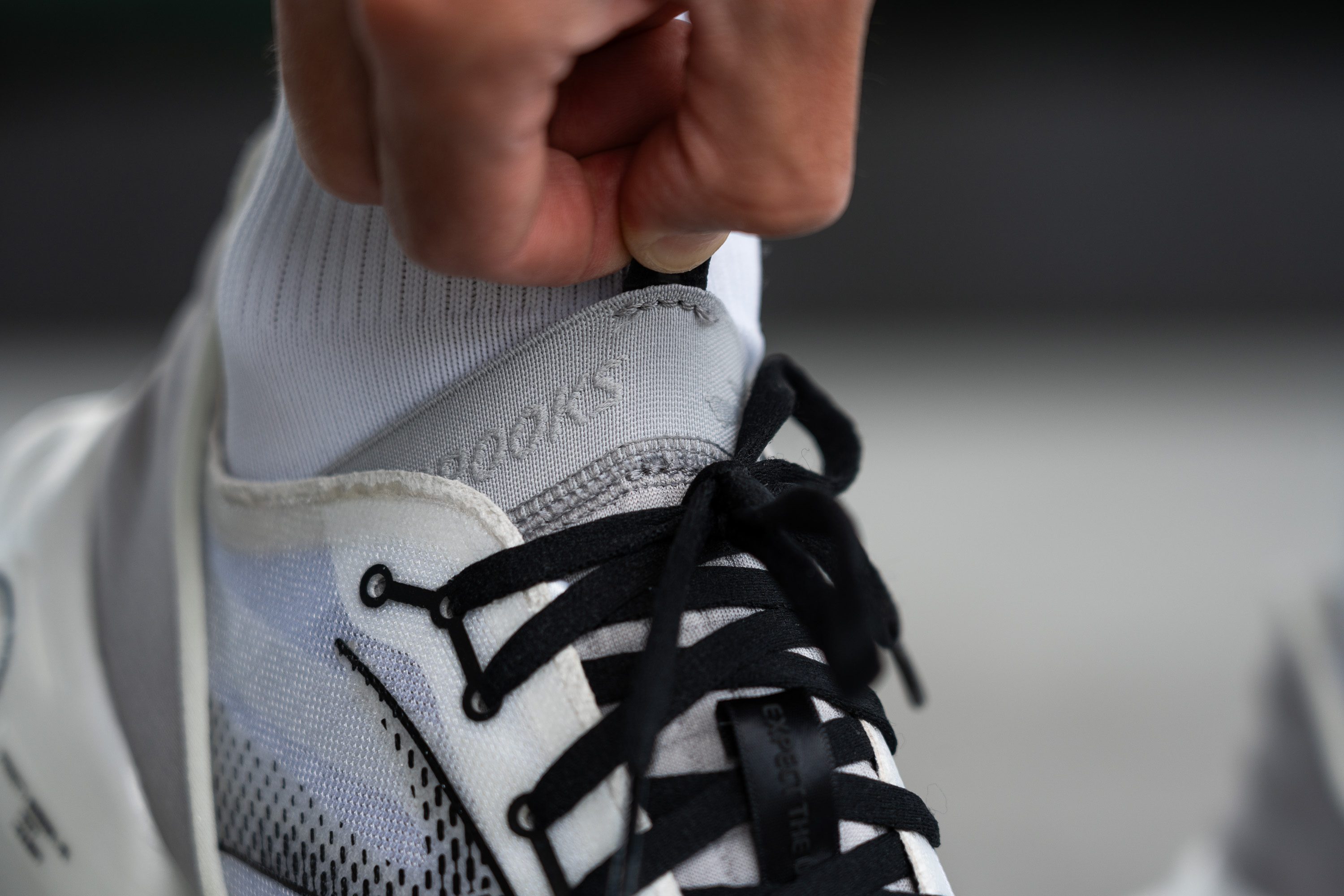
It's perplexing to us that the Hyperion Elite 4—Brooks' premier racing shoe—features a far more padded and comfortable tongue.
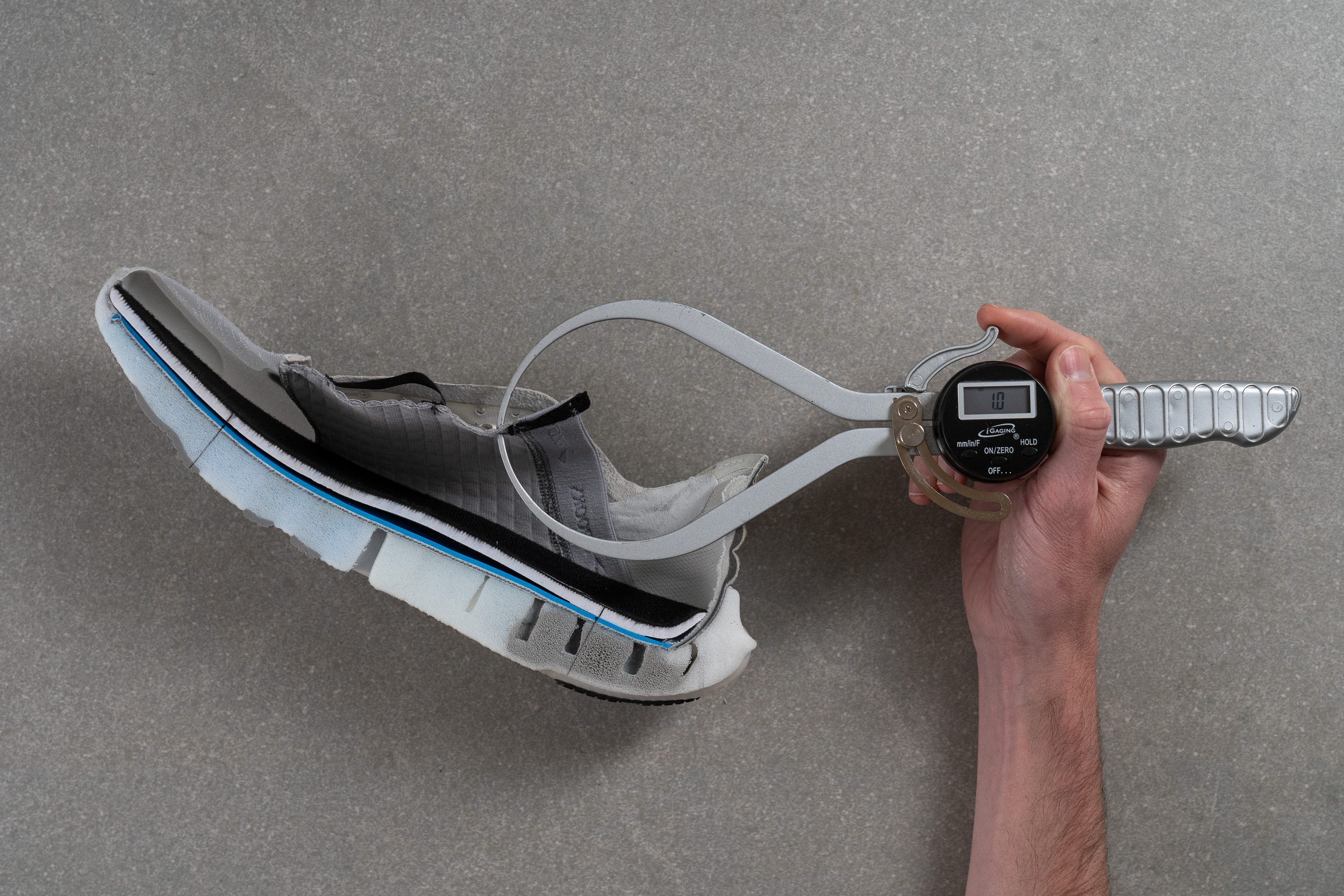
| Aurora-BL | 1.0 mm |
| Average | 5.8 mm |
Tongue: gusset type
The design is so unique that a standard tongue was clearly not an option.
Instead, we discovered a bootie construction, which proved to be extremely comfortable and effective during our runs. This setup ensures that the tongue stays fixed in place, eliminating any potential side-to-side movement.
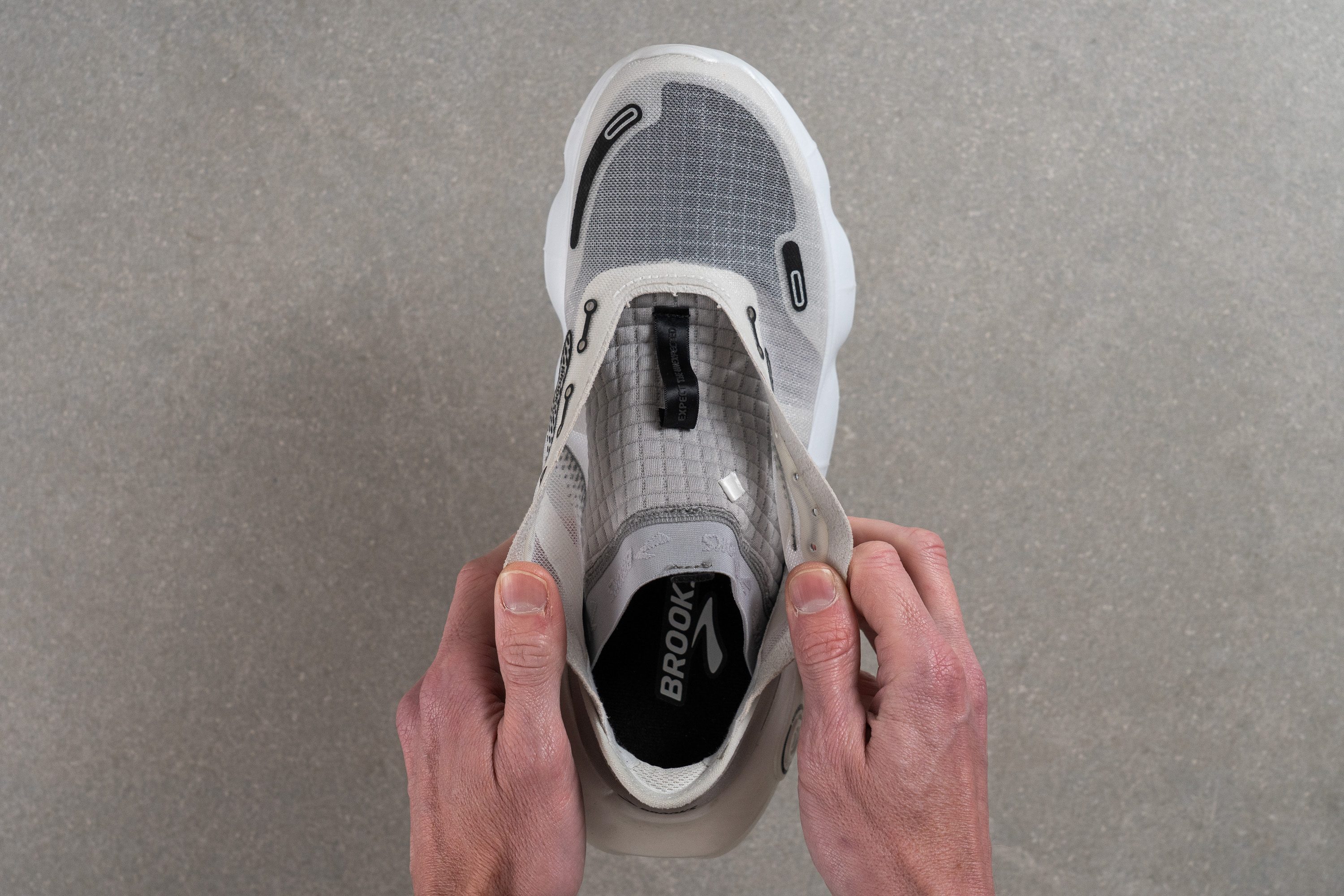
| Aurora-BL | Bootie |
Heel tab
Although there's no heel tab, we discovered that Brooks compensated with an extended heel collar, which is easy to grab. This design makes it simpler to slip your feet into the bootie-like upper without any struggle.
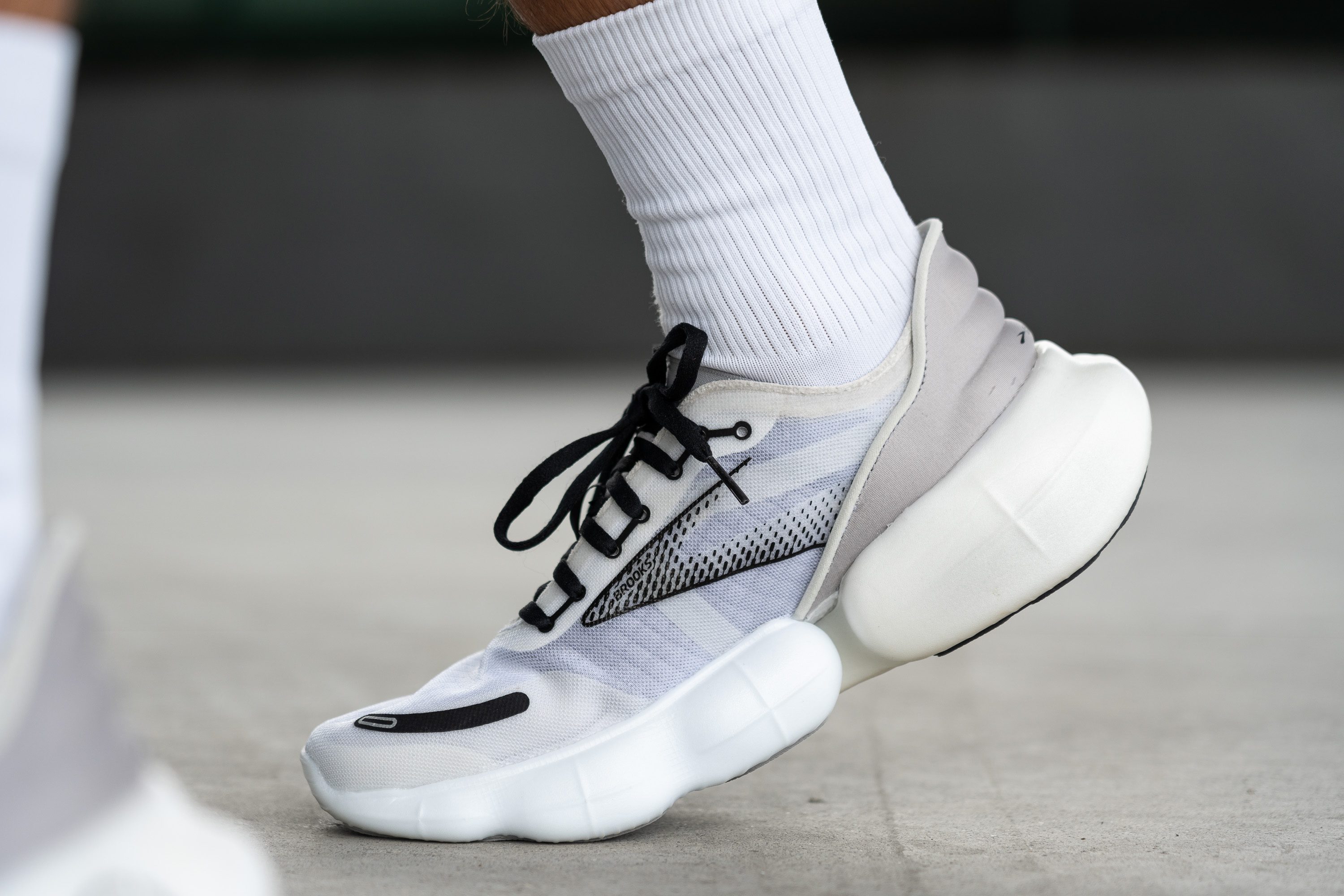
| Aurora-BL | Extended heel collar |

